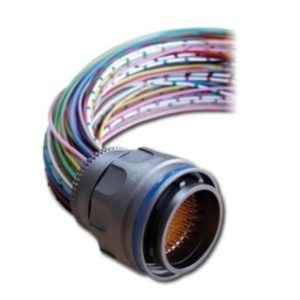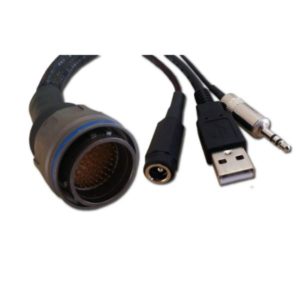No products in the cart.
Drone Harnesses
Showing all 2 results
Filters Sort results
Reset Apply
IP68 aluminium rugged connector, 68 pin, 19.68″ 500mm wire leads, Unipolar wires, Bare end wires Last Updated: 14-03-2022 | ||
IP68 aluminum rugged connector, 68 pin, 19.68″ 500mm wire leads, Unipolar wires, Bare end wires, Joystick and USB connector Last Updated: 14-03-2022 |
Drone Harnesses For Sale on AvPay
AvPay has a range of UAV Harnesses For Sale in the US, Europe, Australia, South Africa and throughout the world. Contact Drone Equipment Sellers directly on AvPay to compare prices through the Aviation Directories here: https://avpay.aero/directory/
AvPay is a global aviation marketplace that lets you browse a wide selection of Drone Equipment For Sale. View all of our Drone Equipment Listings and discover other related Aviation Products & Services here: https://avpay.aero/marketplace/
Can’t find the Drone Harness you’re looking for? Check-out the Aviation Directories to find an Aviation Company that offers the service you’re looking for: https://avpay.aero/directory/
AvPay: Connecting Drone Pilots with Drone Equipment Sellers Worldwide!
A drone harness is a wearable device designed to distribute the weight of a drone and its associated equipment across the pilot’s body, providing better support and comfort during drone operations. A well-designed drone harness helps distribute the weight of the drone and its payload evenly across the pilot’s body, reducing strain on the arms, shoulders, and back. By alleviating the physical burden, it allows the pilot to maintain better posture and reduces fatigue during prolonged flights. This ergonomic support enhances comfort, enabling pilots to focus on their flight operations without distractions or discomfort. A drone harness typically includes a secure mounting system or attachment points for the drone’s remote controller, freeing the pilot’s hands for flight control. With the controller secured to the harness, the pilot can operate the drone using both hands while having easy access to the controls. This hands-free operation enhances pilot efficiency and responsiveness, especially during complex manoeuvres or critical flight situations. When wearing a drone harness, the pilot’s body acts as a stabilizing element, adding an extra layer of stability to the flight control. The harness helps minimize body movements and vibrations, which can transfer to the drone during manual control. This improved stability translates into smoother flights and more precise control, reducing the risk of unintended movements or erratic behaviour. Take-off and landing are critical phases of a drone flight. With a drone harness, the pilot can secure the drone to their body during these moments, providing additional stability and reducing the chance of accidental drops or crashes. The harness also keeps the pilot’s hands free to maintain better control during these critical flight operations, minimizing the risk of mishaps or accidents. A drone harness with a secure mounting system for the remote controller helps prevent accidental dropping or loss of control. It provides a stable and secure location for the controller, reducing the likelihood of fumbling or dropping it during flight. This mitigates the risk of losing control of the drone due to controller mishandling, especially in challenging flight conditions. Some drone harnesses include additional features such as adjustable viewing platforms or display mounts. These features allow the pilot to position a smartphone, tablet, or other display device conveniently within their line of sight, enhancing situational awareness. The pilot can easily monitor live video feeds, telemetry data, or maps without having to constantly look down or hold a separate device, promoting better awareness of the drone’s surroundings and potential obstacles. By providing ergonomic support, hands-free operation, stability, and safety enhancements, a drone harness increases a pilot’s level of comfort and improves flight safety. It reduces physical strain, enhances pilot control, and minimizes the risk of accidents or mishandling during flight operations, ultimately contributing to a more efficient and safer drone flying experience.






